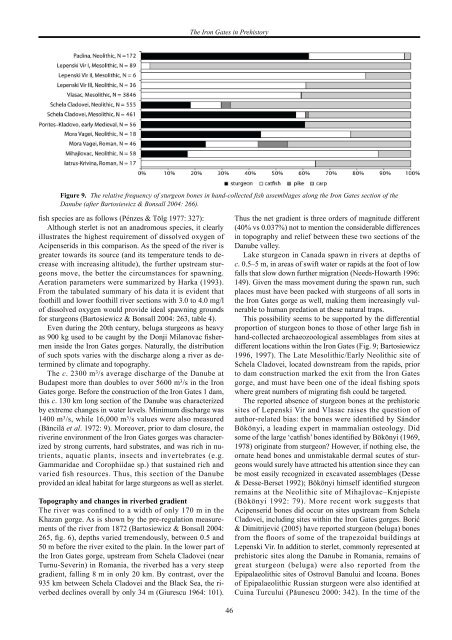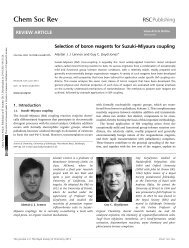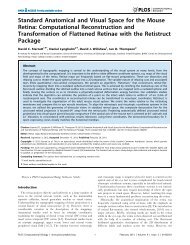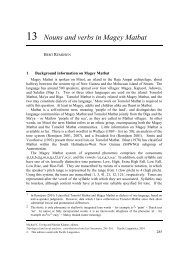Sturgeon fishing in the middle and lower Danube region László ...
Sturgeon fishing in the middle and lower Danube region László ...
Sturgeon fishing in the middle and lower Danube region László ...
Create successful ePaper yourself
Turn your PDF publications into a flip-book with our unique Google optimized e-Paper software.
fish species are as follows (Pénzes & Tölg 1977: 327):<br />
Although sterlet is not an anadromous species, it clearly<br />
illustrates <strong>the</strong> highest requirement of dissolved oxygen of<br />
Acipenserids <strong>in</strong> this comparison. As <strong>the</strong> speed of <strong>the</strong> river is<br />
greater towards its source (<strong>and</strong> its temperature tends to decrease<br />
with <strong>in</strong>creas<strong>in</strong>g altitude), <strong>the</strong> fur<strong>the</strong>r upstream sturgeons<br />
move, <strong>the</strong> better <strong>the</strong> circumstances for spawn<strong>in</strong>g.<br />
Aeration parameters were summarized by Harka (1993).<br />
From <strong>the</strong> tabulated summary of his data it is evident that<br />
foothill <strong>and</strong> <strong>lower</strong> foothill river sections with 3.0 to 4.0 mg/l<br />
of dissolved oxygen would provide ideal spawn<strong>in</strong>g grounds<br />
for sturgeons (Bartosiewicz & Bonsall 2004: 263, table 4).<br />
Even dur<strong>in</strong>g <strong>the</strong> 20th century, beluga sturgeons as heavy<br />
as 900 kg used to be caught by <strong>the</strong> Donji Milanovac fishermen<br />
<strong>in</strong>side <strong>the</strong> Iron Gates gorges. Naturally, <strong>the</strong> distribution<br />
of such spots varies with <strong>the</strong> discharge along a river as determ<strong>in</strong>ed<br />
by climate <strong>and</strong> topography.<br />
The c. 2300 m 3 /s average discharge of <strong>the</strong> <strong>Danube</strong> at<br />
Budapest more than doubles to over 5600 m 3 /s <strong>in</strong> <strong>the</strong> Iron<br />
Gates gorge. Before <strong>the</strong> construction of <strong>the</strong> Iron Gates 1 dam,<br />
this c. 130 km long section of <strong>the</strong> <strong>Danube</strong> was characterized<br />
by extreme changes <strong>in</strong> water levels. M<strong>in</strong>imum discharge was<br />
1400 m 3 /s, while 16,000 m 3 /s values were also measured<br />
(Bǎncilǎ et al. 1972: 9). Moreover, prior to dam closure, <strong>the</strong><br />
river<strong>in</strong>e environment of <strong>the</strong> Iron Gates gorges was characterized<br />
by strong currents, hard substrates, <strong>and</strong> was rich <strong>in</strong> nutrients,<br />
aquatic plants, <strong>in</strong>sects <strong>and</strong> <strong>in</strong>vertebrates (e.g.<br />
Gammaridae <strong>and</strong> Corophiidae sp.) that susta<strong>in</strong>ed rich <strong>and</strong><br />
varied fish resources. Thus, this section of <strong>the</strong> <strong>Danube</strong><br />
provided an ideal habitat for large sturgeons as well as sterlet.<br />
Topography <strong>and</strong> changes <strong>in</strong> riverbed gradient<br />
The river was conf<strong>in</strong>ed to a width of only 170 m <strong>in</strong> <strong>the</strong><br />
Khazan gorge. As is shown by <strong>the</strong> pre-regulation measurements<br />
of <strong>the</strong> river from 1872 (Bartosiewicz & Bonsall 2004:<br />
265, fig. 6), depths varied tremendously, between 0.5 <strong>and</strong><br />
50 m before <strong>the</strong> river exited to <strong>the</strong> pla<strong>in</strong>. In <strong>the</strong> <strong>lower</strong> part of<br />
<strong>the</strong> Iron Gates gorge, upstream from Schela Cladovei (near<br />
Turnu-Sever<strong>in</strong>) <strong>in</strong> Romania, <strong>the</strong> riverbed has a very steep<br />
gradient, fall<strong>in</strong>g 8 m <strong>in</strong> only 20 km. By contrast, over <strong>the</strong><br />
935 km between Schela Cladovei <strong>and</strong> <strong>the</strong> Black Sea, <strong>the</strong> riverbed<br />
decl<strong>in</strong>es overall by only 34 m (Giurescu 1964: 101).<br />
The Iron Gates <strong>in</strong> Prehistory<br />
Figure 9. The relative frequency of sturgeon bones <strong>in</strong> h<strong>and</strong>-collected fish assemblages along <strong>the</strong> Iron Gates section of <strong>the</strong><br />
<strong>Danube</strong> (after Bartosiewicz & Bonsall 2004: 266).<br />
46<br />
Thus <strong>the</strong> net gradient is three orders of magnitude different<br />
(40% vs 0.037%) not to mention <strong>the</strong> considerable differences<br />
<strong>in</strong> topography <strong>and</strong> relief between <strong>the</strong>se two sections of <strong>the</strong><br />
<strong>Danube</strong> valley.<br />
Lake sturgeon <strong>in</strong> Canada spawn <strong>in</strong> rivers at depths of<br />
c. 0.5–5 m, <strong>in</strong> areas of swift water or rapids at <strong>the</strong> foot of low<br />
falls that slow down fur<strong>the</strong>r migration (Needs-Howarth 1996:<br />
149). Given <strong>the</strong> mass movement dur<strong>in</strong>g <strong>the</strong> spawn run, such<br />
places must have been packed with sturgeons of all sorts <strong>in</strong><br />
<strong>the</strong> Iron Gates gorge as well, mak<strong>in</strong>g <strong>the</strong>m <strong>in</strong>creas<strong>in</strong>gly vulnerable<br />
to human predation at <strong>the</strong>se natural traps.<br />
This possibility seems to be supported by <strong>the</strong> differential<br />
proportion of sturgeon bones to those of o<strong>the</strong>r large fish <strong>in</strong><br />
h<strong>and</strong>-collected archaeozoological assemblages from sites at<br />
different locations with<strong>in</strong> <strong>the</strong> Iron Gates (Fig. 9; Bartosiewicz<br />
1996, 1997). The Late Mesolithic/Early Neolithic site of<br />
Schela Cladovei, located downstream from <strong>the</strong> rapids, prior<br />
to dam construction marked <strong>the</strong> exit from <strong>the</strong> Iron Gates<br />
gorge, <strong>and</strong> must have been one of <strong>the</strong> ideal <strong>fish<strong>in</strong>g</strong> spots<br />
where great numbers of migrat<strong>in</strong>g fish could be targeted.<br />
The reported absence of sturgeon bones at <strong>the</strong> prehistoric<br />
sites of Lepenski Vir <strong>and</strong> Vlasac raises <strong>the</strong> question of<br />
author-related bias: <strong>the</strong> bones were identified by Sándor<br />
Bökönyi, a lead<strong>in</strong>g expert <strong>in</strong> mammalian osteology. Did<br />
some of <strong>the</strong> large ‘catfish’ bones identified by Bökönyi (1969,<br />
1978) orig<strong>in</strong>ate from sturgeon? However, if noth<strong>in</strong>g else, <strong>the</strong><br />
ornate head bones <strong>and</strong> unmistakable dermal scutes of sturgeons<br />
would surely have attracted his attention s<strong>in</strong>ce <strong>the</strong>y can<br />
be most easily recognized <strong>in</strong> excavated assemblages (Desse<br />
& Desse-Berset 1992); Bökönyi himself identified sturgeon<br />
rema<strong>in</strong>s at <strong>the</strong> Neolithic site of Mihajlovac–Knjepiste<br />
(Bökönyi 1992: 79). More recent work suggests that<br />
Acipenserid bones did occur on sites upstream from Schela<br />
Cladovei, <strong>in</strong>clud<strong>in</strong>g sites with<strong>in</strong> <strong>the</strong> Iron Gates gorges. Borić<br />
& Dimitrijević (2005) have reported sturgeon (beluga) bones<br />
from <strong>the</strong> floors of some of <strong>the</strong> trapezoidal build<strong>in</strong>gs at<br />
Lepenski Vir. In addition to sterlet, commonly represented at<br />
prehistoric sites along <strong>the</strong> <strong>Danube</strong> <strong>in</strong> Romania, rema<strong>in</strong>s of<br />
great sturgeon (beluga) were also reported from <strong>the</strong><br />
Epipalaeolithic sites of Ostrovul Banului <strong>and</strong> Icoana. Bones<br />
of Epipalaeolithic Russian sturgeon were also identified at<br />
Cu<strong>in</strong>a Turcului (Pǎunescu 2000: 342). In <strong>the</strong> time of <strong>the</strong>









